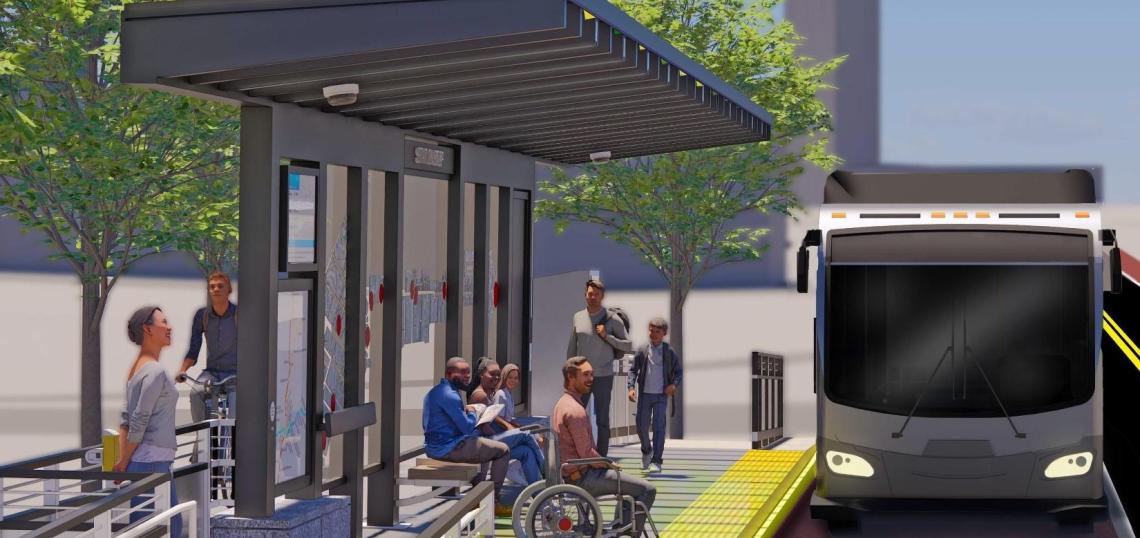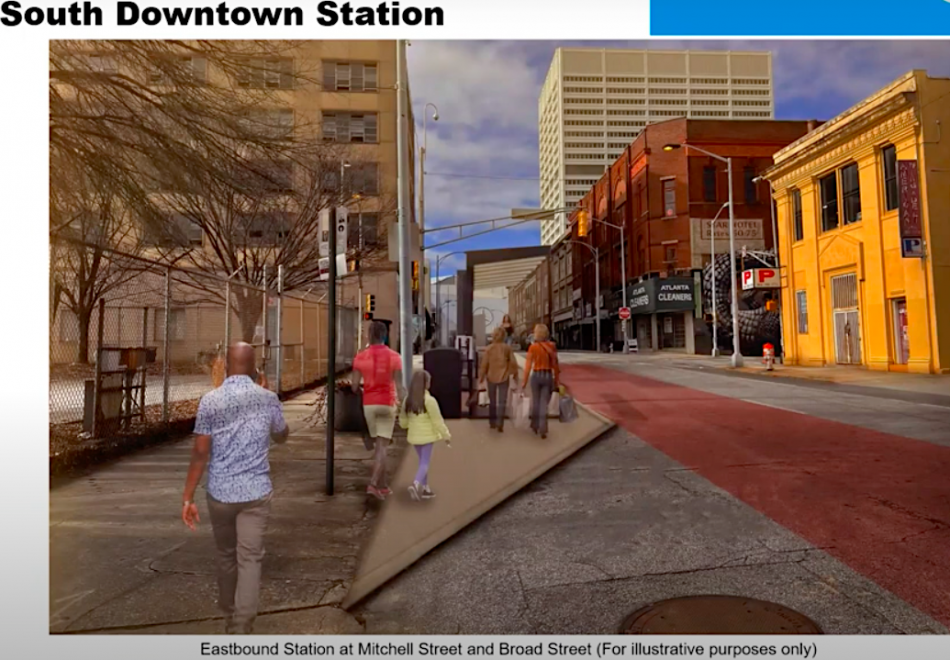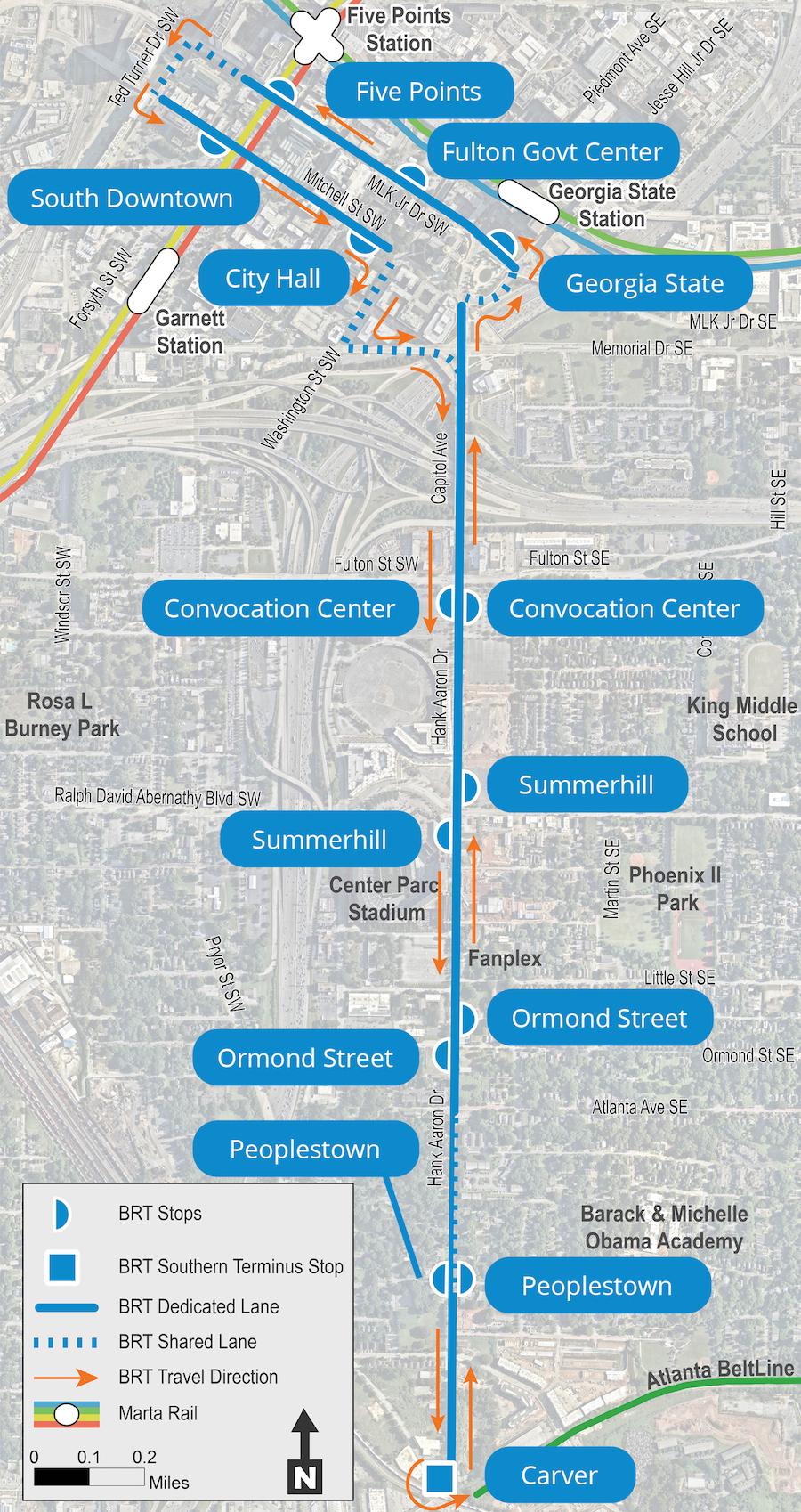An intown transportation project once expected to be among 2022’s biggest groundbreakings is now finally, definitely set for construction, according to MARTA officials.
The transit agency and City of Atlanta leadership have scheduled a Thursday morning ceremony in Summerhill to break ground on the city’s first bus-rapid transit line. (Confetti emoji).
The five-mile BRT route—MARTA’s first new transit line since the Sandy Springs MARTA station opened in the year 2000—will link downtown to neighborhoods such as Summerhill and Peoplestown before ending near the BeltLine’s Southside Trail. Along the way will be connections to MARTA’s heavy rail system at Five Points, Georgia State, and Garnett Stations.
MARTA’s original timeline called for breaking ground on the BRT project in August and beginning service next year, but the project was dogged by skyrocketing building and labor costs, in addition to MARTA’s inexperience with creating new transit lines over the past two decades. An analysis last year showed the Summerhill BRT line—the project’s working title—will cost nearly 49 percent more than previously expected, bumping the estimated $61.5 million price tag up to more than $91 million.
MARTA also plans to unveil the BRT system’s official name during the morning ceremony, planned to take place at the corner of Hank Aaron Drive (a hint?) and Georgia Avenue.
“This line will provide an efficient connection between historic city neighborhoods, job centers, Georgia State, and our rail system, and will be the benchmark for future BRT lines in metro Atlanta,” Collie Greenwood, MARTA general manager and CEO, said in a groundbreaking announcement. That was issued the same day MARTA announced it has managed to balance its $1.6-billion budget for a 12th straight year without fare increases.
The region’s first BRT line, according to MARTA officials, will operate with new electric buses. About 85 percent of the corridor will have dedicated bus-only lanes with transit-signal priority, meaning buses shouldn’t be bogged down in traffic and that travel times should be quicker.
Once the line is built, buses are expected to arrive with frequencies between 10 minutes (daytime peak hours) and 20 minutes (late nights and weekend mornings). MARTA has forecasted that 2,350 riders will use the service on a daily basis once it opens.
MARTA says construction will begin immediately, and that BRT service will debut on the city’s southside sometime in 2025.
The project is funded by the $2.7-billion MORE MARTA half-penny sales tax for transit approved by voters in 2016 and a federal TIGER grant.
Final designs for the Summerhill BRT system were completed last summer. It calls for a five-mile loop linking together the BeltLine area, Peoplestown, Summerhill, Capitol Gateway, and South Downtown neighborhoods. Fourteen stops with level boarding, positioned about 1/3-mile apart from the next, are also planned throughout, although planned stations on Memorial Drive at Capitol Avenue and Trinity Avenue were eliminated to save costs.
Beyond the downtown-Summerhill BRT line, MARTA is moving forward with BRT transportation along the Clifton Corridor near Emory University, on Campbellton Road in Southwest Atlanta, and in Clayton County.
Another four-station BRT route up Ga. Highway 400 with service to Roswell and Alpharetta is also being studied.
...
Follow us on social media:
• Summerhill news, discussion (Urbanize Atlanta)









